Korean War Medals+ Jump Wings +CIB/W-Star Both Sterling + Ribbons-SEE STORE
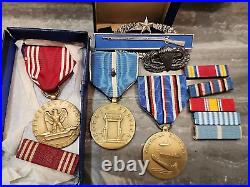

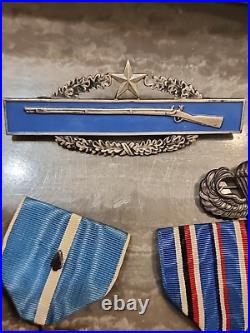
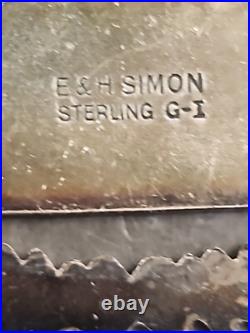

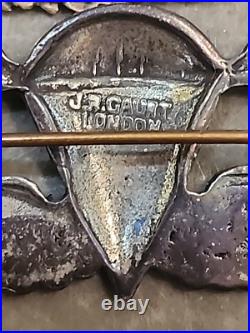

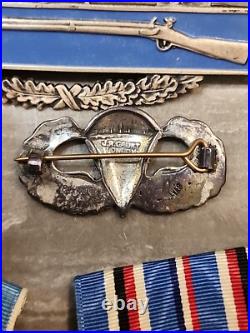
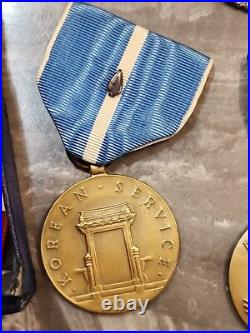
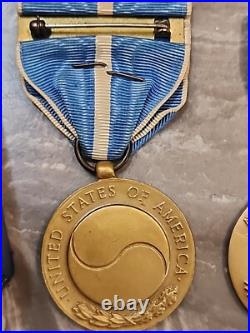
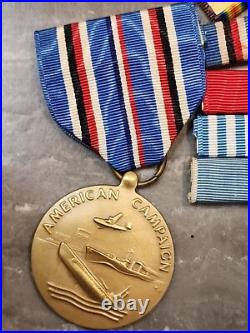


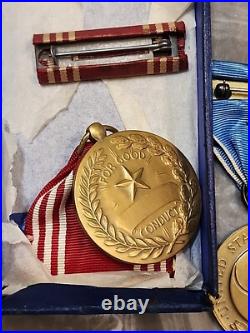
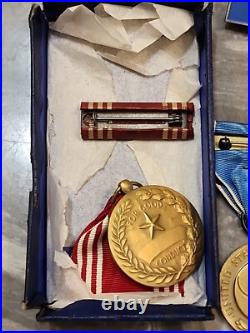
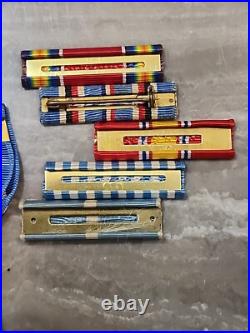

PLEASE FOLLOW OUR E BAY STORE. We do not want your feed back. We want your repeat business. We get by having best prices on the net. Jump Wings theater made in London during WW2 Sterling Silver.
The Korean Service Medal (KSM) was a military award for service in the United States Armed Forces and was established November 8, 1950, by executive order of President Harry Truman. The Korean Service Medal is the primary US military award for service or participation in operations in the Korean area during the Korean War between June 27, 1950, and July 27, 1954. The United States Department of Defense declared thirteen official campaigns of the Korean War, all of which are annotated by service stars on the Korean Service Medal.
Some campaigns apply to all branches of the US military, while others are branch specific. The Korean Service Medal is authorized a 3/16 bronze or silver (indicates five campaigns) service star to denote participation in any of the following campaigns. North Korean Aggression (USMC, Navy): June 27 to November 2, 1950. United Nations Defensive (Army, USAF): June 27 to September 15, 1950[4]. Inchon Landing (USMC, Navy): September 13 to 17, 1950. United Nations Offensive (Army, USAF): September 16 to November 2, 1950[4]. Chinese Communist Forces Intervention (Army, USAF): November 3, 1950, to January 24, 1951[4]. Communist China Aggression (USMC, Navy): November 3, 1950, to January 24, 1951. First United Nations Counteroffensive (USMC, Army, Navy, USAF): January 25 to April 21, 1951[4]. Chinese Communist Forces Spring Offensive (USMC, Army, Navy, USAF): April 22 to July 8, 1951[4]. United Nations Summer-Fall Offensive (USMC, Army, Navy, USAF): July 9 to November 27, 1951[4]. Second Korean Winter (USMC, Army, Navy, USAF): November 28, 1951, to April 30, 1952[4]. Korean Defense Summer-Fall, 1952 (USMC, Army, Navy, USAF): May 1 to November 30, 1952[4]. Third Korean Winter (USMC, Army, Navy, USAF): December 1, 1952, to April 30, 1953[4]. Korea, Summer 1953 (USMC, Army, Navy, USAF): May 1 to July 27, 1953[4].An arrowhead device is authorized for US Army or Air Force personnel to denote participation in each of the following:[5]. Airborne attacks on Sukch'on-Such'on and Munsan-Ni. Fleet Marine Force combat operation insignia. The Fleet Marine Force Combat Operation Insignia is authorized for US Navy personnel who served with the Marine Corps at any time during the Korean War.
Although the Korean War Armistice ended combat operations in Korea on 27 July 1953, the Korean Service Medal was issued until June 1954 due to the tense nature of the occupation and garrison duty immediately after the armistice, as well as the high possibility of a renewed attack by North Korea. After 1954, the Korean Service Medal was no longer issued although the Armed Forces Expeditionary Medal was authorized for Korean area service between October 1, 1966, to June 30, 1974. As of 2004, a new medal known as the Korea Defense Service Medal was authorized for members of the armed forces who served in the defense of the Republic of Korea from July 28, 1954, to a date to be determined.
The KSM was designed by the Army Heraldic Section. The color scheme of the ribbon is derived from the Flag of the United Nations, as it was under the auspices of the United Nations (United Nations Security Council Resolution 82) that the war was conducted. The medal itself features a "Korean gateway, " most likely an iljumun, on the front, and a taegeuk on the reverse. The United Nations Service Medal for Korea was usually issued alongside the Korean Service Medal. Beginning in 1999, the Republic of Korea War Service Medal was also awarded to United States service members who received the Korean Service Medal.
The Republic of Korea Presidential Unit Citation is retroactively authorized to any United States Army veteran who served in Korea during the War. Special Skill Group 1 Badge. Army infantry or special forces officers (SSI 11 or 18) in the grade of colonel or below, Army enlisted soldiers and warrant officers with an infantry or Special Forces military occupational specialty. The CIB is authorized for award for the following qualifying wars, conflicts, and operations. A separate award of the CIB has been authorized for qualified soldiers in the following qualifying periods. World War II (7 December 1941 to 3 September 1945). Korean War (27 June 1950 to 27 July 1953).Vietnam War and other operations. (2 March 1961 to 10 March 1995). On 8 February 1952, the Army approved the addition of stars to the CIB indicating the soldier's having fought in more than one war.
The first was the second-award CIB recognizing Korean War. Combat operations; in that time, the U. Army's Institute of Heraldry. Also had created eighth-award CIB designs. The second- through fourth-award CIB awards were indicated with silver five-point stars, one to three stars centered, at badge's top, between the tips of the oak-leaf wreath; the fifth- through eighth-awards of the CIB were indicated with gold stars.However, Army Regulation 600-8-22 (Military Awards) only authorizes up to three awards of the CIB. There are four periods for which an award of the badge can be made. Vietnam War and other Cold War era actions (2 March 1961 to 10 March 1995). War on Terror (18 September 2001 to a date to be determined). Currently, the Combat Infantryman Badge is worn.
Inch (6.4 mm) above the service ribbons above the left-breast pocket of the Class-A uniform coat and of the other uniforms with which the CIB is authorized. As of June 2011, the badge and its sew-on equivalent may be worn on the Army Combat Uniform (ACU).
